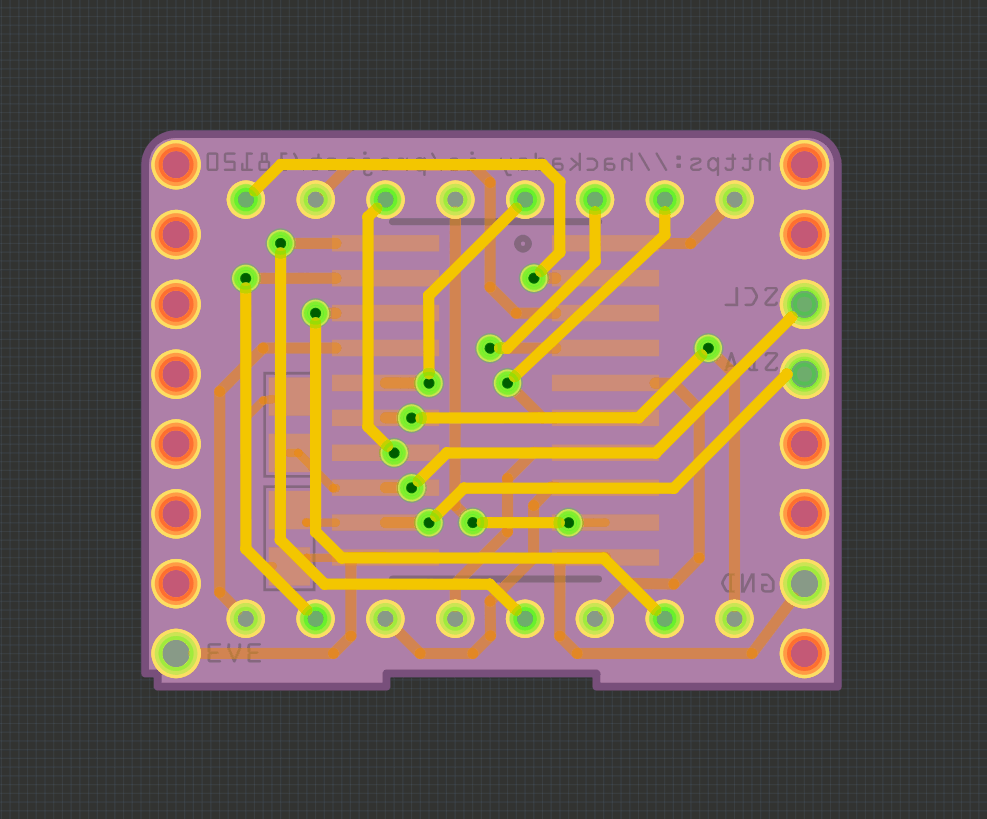My recent trouble with code for #Servo Breakout for WeMos D1 Mini made me think whether I actually didn't jump to conclusions too fast with those HT16K33 chips. You know what they teach you: before you blame the hardware, the compiler, the operating system or the libraries, make sure that everything on your side is absolutely spotless and correct. I thought I did. I was wrong.
Today I took the Adafruit HUZZAH Feather board, connected one of the non-working matrix shields to its GPIO0 and GPIO2 pins (the ones that have built-in pullups), uploaded my ht16k33_matrix module and tried it, and... it worked. Just like that.
Of course the shields connect to pins GPIO4 and GPIO5 of the D1 Mini, which do not have their own external pullups, so I have no choice but to re-design the PCB again, this time to include footprints for a two additional resistors:

I will of course "fix" the shields i already have, by simply soldering the resistors straight to the pins -- so the good news is that I will have a bunch of working shields. The bad news is I will have to wait a couple of weeks more to test the new PCBs before I can officially announce this project as working.
 deʃhipu
deʃhipu
Discussions
Become a Hackaday.io Member
Create an account to leave a comment. Already have an account? Log In.
Nice to see the problem found/fixed!
Then again, I've seen examples of each of the above problems, except operating system bugs - oh, wait - if you count the OS that runs on a leading networking company's routers, then I've seen those, too.
Trust, but verify :-)
Are you sure? yes | no
Yes, those problems do happen. But since you can't really do much about them, it's good to first focus on and eliminate all the sources of problems that you can control -- the goal is to get this working, not to feel smug about yourself.
Are you sure? yes | no